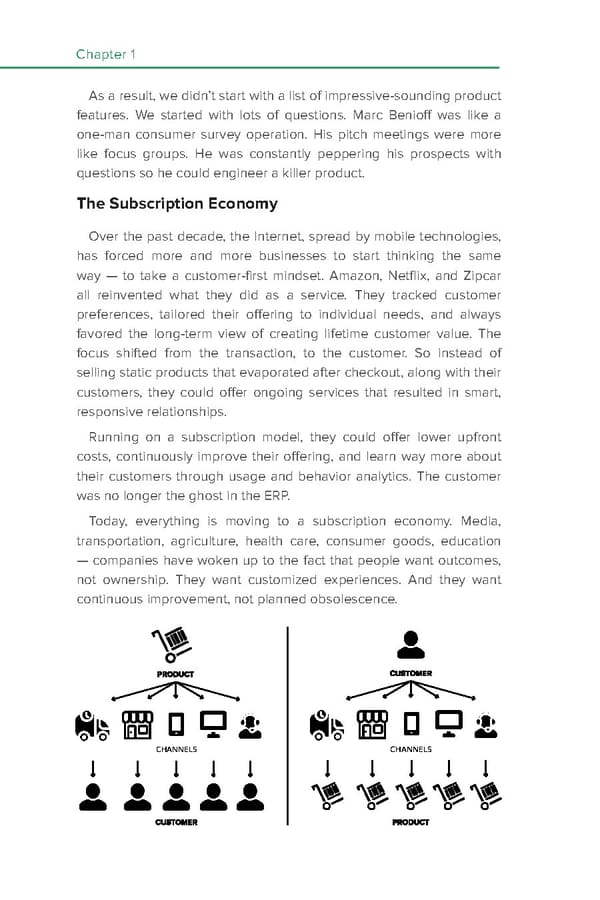Chapter 1 As a result, we didn’t start with a list of impressive-sounding product features. We started with lots of questions. Marc Benioff was like a one-man consumer survey operation. His pitch meetings were more like focus groups. He was constantly peppering his prospects with questions so he could engineer a killer product. The Subscription Economy Over the past decade, the Internet, spread by mobile technologies, has forced more and more businesses to start thinking the same way — to take a customer-first mindset. Amazon, Netflix, and Zipcar all reinvented what they did as a service. They tracked customer preferences, tailored their offering to individual needs, and always favored the long-term view of creating lifetime customer value. The focus shifted from the transaction, to the customer. So instead of selling static products that evaporated after checkout, along with their customers, they could offer ongoing services that resulted in smart, responsive relationships. Running on a subscription model, they could offer lower upfront costs, continuously improve their offering, and learn way more about their customers through usage and behavior analytics. The customer was no longer the ghost in the ERP. Today, everything is moving to a subscription economy. Media, transportation, agriculture, health care, consumer goods, education — companies have woken up to the fact that people want outcomes, not ownership. They want customized experiences. And they want continuous improvement, not planned obsolescence. CHANNELS CHANNELS
 Subscription Economics Page 5 Page 7
Subscription Economics Page 5 Page 7